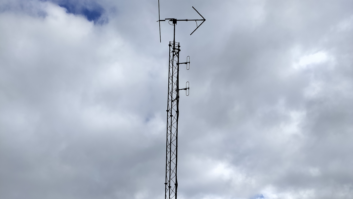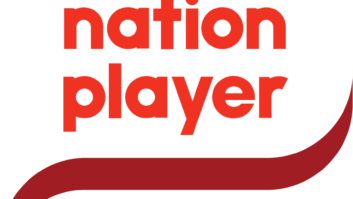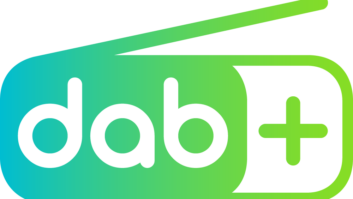EEKLO, Belgium — Sept.1 saw the large-scale launch of Roxx, a new DAB+ player in the Flemish radioscape. The station is the Flemish region’s first broad “rock” format.
 The Roxx on-air studio is a basic set-up with an analog Dateq BCS 50 broadcast console.
The Roxx on-air studio is a basic set-up with an analog Dateq BCS 50 broadcast console.Roxx is the brainchild of radio presenter and producer Jeroen Gorus. “Flanders is ready for a station like Roxx. All stations are, format-wise, fishing in the same pond, eating away each other’s audience shares. But where can you listen to Jackson Browne during daytime programs?”
Gorus admits that the new FM frequency plan played a crucial role in the creation of Roxx. “A true blessing in disguise,” he added, referring to the fact that Roxx’s parent company, Vlacora, failed to obtain FM network licenses for its other stations.
“Vlacora’s Manager Christophe Moens gave me ‘carte blanche’ to set up Roxx, so for me, the frequency plan eventually turned out very positive.” Vlacora continues to play a coordinating role in terms of advertising, technical support, infrastructure and know-how for Roxx.

Contrary to terrestrial FM broadcasts, DAB+ is not subject to government license allocation — Roxx (Vlacora) notified the Flemish Media Regulatory body, Vlaamse Regulator voor de Media, and concluded a distribution contract with network provider Norkring.
TECHNICAL SETUP
In a first phase of the Roxx project, the station is using one of Vlacora’s analog Dateq BCS 50 broadcast consoles. “We’ve adapted one of the company’s former on-air studios for Roxx,” said Sebastien Vansever, technical coordinator with Vlacora.
“The Radio Host playout system was replaced by ProppFrexx OnAir v4.0 software. The big advantage over Radio Host is that Proppfrexx has more options and delivers streamlined automatization and playout. The new, German-made system is much more stable and user-friendly and has more audio source inputs with full metadata support.”
The studio also has two Technics SL MSK 1200 turntables. “Our music database contains quite a lot of digitized vinyl tracks, but sometimes we play songs directly from the turntables. This adds to the signature sound of the station,” explained Vansever. “Some tracks are very rare or unavailable on CD so we must play the vintage vinyl,” continued Gorus. “The vinyl sound is part of the music experience.”

The Roxx on-air studio is completed with a vintage Electro-Voice RE20 broadcast microphone and JBL TLX2 Hi-Fi monitors.
The station’s audio signal is processed from the Roxx studio where it is optimized through an Orban Optimod 2200 broadcast compressor, transmitted via a Barix Exstreamer 1000 network audio IP encoder to Norkring’s DAB+ distribution hub in Sint-Pieters-Leeuw.
“We also optimized the audio processing,” added Vansever. “We wanted more adequate tone settings and improved adjustment controls resulting in better sounding AAC audio files — DAB+ requires specific audio signal processing to achieve a full sound, and it is quite different to what is used for FM broadcasts.”
AGGREGATION
Norkring Belgium welcomed the new player and format. Together with the commercial “early adopters,” the broadcast transmission provider has been working on a progressive deployment of DAB+ transmitters throughout Flanders. In April 2018, the company announced the “ready for service-phase 3” for commercial radio stations with 10 active DAB+-transmitters.
On Sept. 1, Norkring finalized the deployment of the 18 transmitters needed for full coverage throughout Flanders. It collects the stations’ audio signals in its technical center in Sint-Pieters-Leeuw where they are aggregated and encoded in AAC+ (or HE-AAC) to offer the best digital audio quality.

Norkring has opted to include 12 stations per multiplex with, for most of the stations, a bandwidth of 96 kbps per station. For the main audio signal 80 kbps are used, the remaining 16 kbps include extra data like slideshows for traffic information, pictures, cover-art and music information. Stations send their slides in real-time, which are then added to the respective signal. The aggregated signal is then routed over the company’s fiber-optic network to Norkring’s transmitter park.
“The nice thing about DAB+ is that, when transmittersignals overlap each other, the digital signal is enhanced, resulting in even better coverage,” said Dominique Lievyns, Norkring’s chief sales and marketing
officer.
The Roxx radio team, headed by Gorus, consists of two full-time staffers and three free-lance presenters.
“We’re working under the ‘rock radio’ banner, but I prefer to take this to a broad interpretation of the genre, and we consider it more as a quality label. We don’t want to pin ourselves, but I would say we’re targeting 30- to 35-year-olds with a higher education,” said Gorus. “Even in the low-profile pre-start phase we got quite a lot of feedback from a younger audience who embrace the unique format in Flanders.”
DIFFERENT APPROACH
With hosted live programs between 6–9 a.m., 12–2 p.m. and 5–7 p.m., Roxx wants to differentiate itself from other stations. “We resolutely opted for a nontalk format during ‘office hours’ because we want to offer an alternative to what we hear on radio today — lots of talk — Roxx wants to explore other options.”
Considering Roxx’s “national” coverage, the station offers national advertising. In this respect, Vlacora concluded an agreement with ad sales house IP Radio. “We’re very happy to add this original and daring format to our current offer,” said Steve Van Den Audenaerde, director with IP Radio. “Roxx will rapidly be discovered in the car, where DAB+ is becoming very available. We are confident the station is poised to quickly build a loyal fan base, making Roxx an important player in the DAB+ landscape.”
[Read: MNM Inaugurates New Mobile Studio]
After six months of preliminary trial broadcasts and testing, Roxx saw its full-scale launch during the first weekend of September. “Commercially seen, setting up a new station before the holiday season is not the best plan,” admits Gorus, “We wanted to launch Roxx as quickly as possible, because the number of commercial stations on the Norkring DAB+ multiplex is limited. Big media groups are eyeing the DAB+ network with all kinds of sub-stations and we thought it was important to board the DAB+ train immediately.”
For the launch the station had two days of personality-driven radio with artists and media personalities who fit the Roxx DNA. Each personality hosted two hours of radio presenting their favorite tracks between 10 a.m. and 6 p.m.
With Roxx’s mobile studio, the launch of the new station was highlighted on public events such as the Ghent Jaarbeurs (Sept. 15–23) and pop-up presentations at Antwerp’s Hard Rock café. The mobile set-up consists of a Klotz Digital broadcast console, the Proppfrexx OnAir playout system and three Neumann TLM 102 microphones.
Despite the most critical point for DAB+ stations being audience adoption, Gorus reveals a 15 percent market penetration in Flanders for DAB+.
“This means the nonbelievers seem to be wrong. Three years after Norkring initiated the DAB+ project, the audience potential continues to grow — that’s fantastic,” he said, adding that Roxx is also broadcasting via Telenet Digibox and web streaming.












